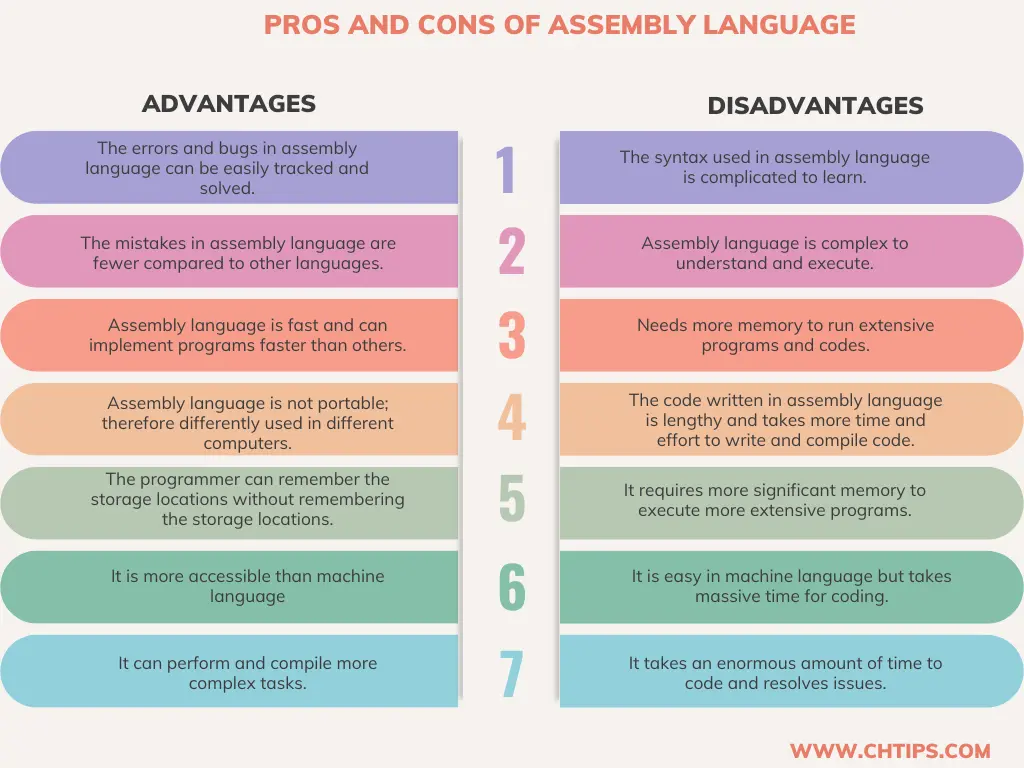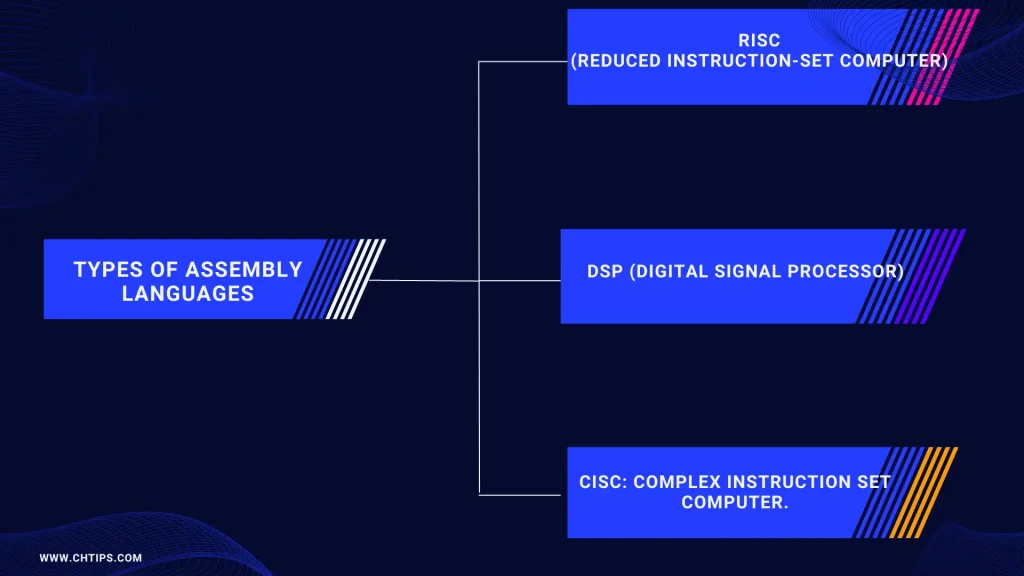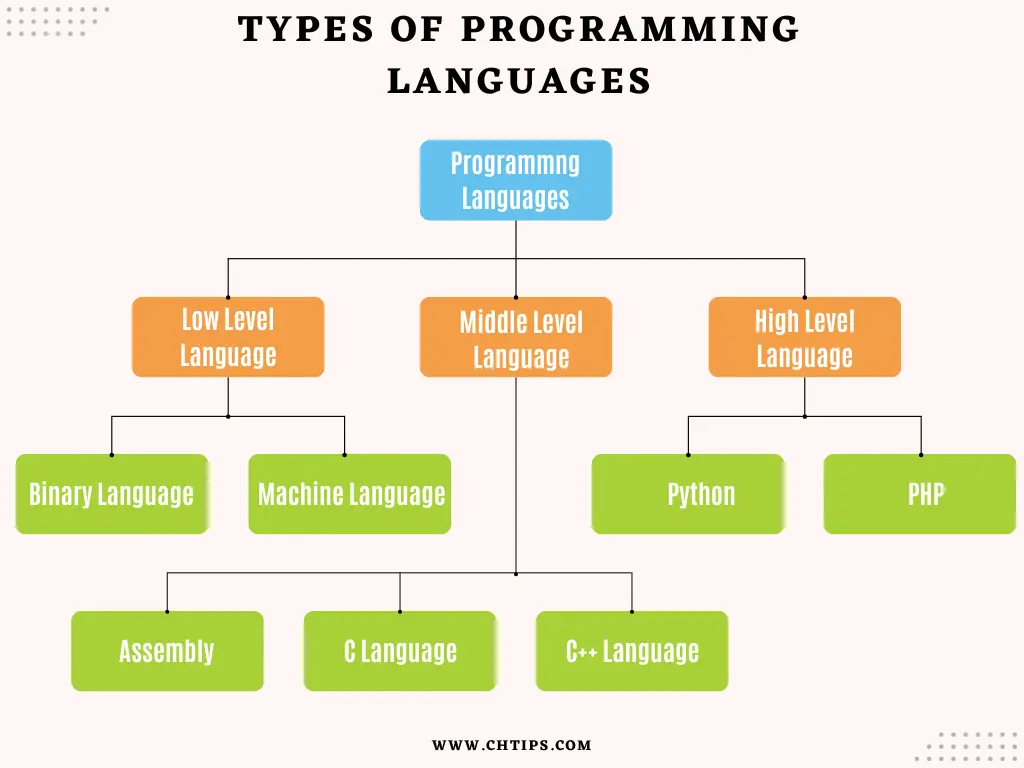Assembly language is a low-level language. That was designed and developed to solve the issue related to machine languages.
Computers cannot understand human languages. They convert all the instructions given to them into binary languages like 0s and 1s.
The assembly language uses Mnemonics code with ease of the burden of remembering and making code simple to run and execute.
There are several advantages and disadvantages of assembly language | pros and cons of assembly language.
Assembler is used to convert assembly language to machine language for better usability, performance, and understanding.
What is Assembly Language in Computer Systems?
Assembly language is a programming language used to program computer systems.
It is designed for use with computers to create code that the computer can execute.
Assembly language is widely used in data science, providing a high degree of flexibility and efficiency in creating code.
Assembly language can create programs targeting specific platforms, such as Microsoft Windows or Apple Macs.

As such, it can be an excellent tool for developers who want to write code specifically for their platform.
Additionally, assembly language can be used to write code that runs on multiple platforms, which is helpful if you need to work on code that will run on different devices or operating systems.
Assembly language also has several features that make it an efficient tool for scientific solutions.
For example, assembly language provides a wide range of input and output methods that make it easy to read and write data files.
Additionally, assembly language includes tools that make it easy to develop algorithms and solve problems quickly.
Finally, assembly language includes libraries and tools, allowing developers to quickly access various data sources and resources.
Advantages and Disadvantages of Assembly Language | Benefits and Drawbacks of Assembly Language in Tabular Form
| # | Advantages of Assembly Languages | Disadvantages of Assembly Languages |
| 1 | The errors and bugs in assembly language can be easily tracked and solved. | The syntax used in assembly language is complicated to learn. |
| 2 | The mistakes in assembly language are fewer compared to other languages. | Assembly language is complex to understand and execute. |
| 3 | Assembly language is fast and can implement programs faster than others. | Needs more memory to run more extensive programs and codes. |
| 4 | Assembly language is not portable; therefore differently used in different computers. | The code written in assembly language is lengthy and takes more time and effort to write and compile code. |
| 5 | The programmer can remember the storage locations without remembering the storage locations. | It requires more significant memory to execute more extensive programs. |
| 6 | It is more accessible than machine language | It is easy in machine language but takes massive time in coding. |
| 7 | It can perform and compile more complex tasks. | It takes an enormous amount of time to code and resolves issues. |
| 8 | It interacts with computer hardware. | The programmer needs knowledge regarding hardware before coding. |
| 9 | It can run on the majority of computers. | It is a machine-dependent language. |
| 10 | Write less code to achieve the desired result. | Prone to errors. |
Advantages and Disadvantages of Assembly Language With Infographic

Types of Assembly Languages
- RISC (Reduced Instruction-Set Computer)
- DSP (Digital Signal Processor)
- CISC: Complex Instruction Set Computer.

Limitation Assembly Language
- Assembly language code is run and executed on special configuration computers.
- For every processor, different programs are written.
- The programmer must be aware of computer hardware devices.
- Assemblers must convert assembly language into machine language as the computer does not understand assembly language.
Feature of Assembly Language
- Assembly language uses and utilizes Mnemonic Code.
- Assemblers are used to convert or translate Assembly into machine language.
- Assembly language is a low-level language.
- Assembly language is easy to learn and execute.
- Errors and bugs can be easily diagnosed and rectified.
Programming Language Launched Date & Uses
| # | Programming Language | Uses | Launched Year |
| 1 | C | Device Drivers and Operating System | 1972 |
| 2 | C++ | Games, Video, and Picture Editing Software. | 1985 |
| 3 | Python | Artificial Intelligence and Machine learning | 1991 |
| 4 | PHP | Application Development, Software. | 1995 |
| 5 | .NET | Desktop Software and Application Software. | 2001 |
| 6 | JAVA | Enterprise Application Development | 1996 |
| 7 | JavaScript | Rich Interactive Web Applications | 1995 |
| 8 | Jquery | It is a framework of javascript used to add extra functionality to webpages. | 2006 |
| 9 | SQL | Database Management | 1979 |
Different Types of Programming Languages

What is Low-Level Language Explained Using Examples
Low-Level programming languages (LPLs) are a great way to build low-level apps and systems.
They’re easy to learn and give you the power to quickly create complex applications.
But there’s one catch: LPLs can be challenging for developers new to coding.

Low-Level Programming Languages are designed to be easy to use and efficient.
They typically have a small number of features, making them perfect for developing applications and systems quickly.
There are three types of Low-Level Programming Languages: Assembly, machine code, and Virtual Machine.
Assembler is the most commonly used type of Low-Level Programming Language. Assemblers help you write code concisely.
They can be used to develop Android apps or iOS applications.
Machine code is another common type of Low-Level Programming Language.
It is similar to Assembly but uses instructions instead of words. This makes it easier for you to understand and create complex programs.
Virtual Machine is the fourth type of Low-Level Programming Language explicitly designed for gaming platforms like PlayStation 4 and Xbox One.
With this language, you can program your games in real-time using an external controller or computer algebra software.
There are many different uses for low-level programming languages, but the most common ones are developing applications, writing games, and creating software applications.
Additionally, some developers use low-level programming languages to speed up their development process by creating smaller programs that can be executed more quickly.
Advantages of Low-Level Language
- Low-Level Language requires less memory and less time to execute.
- They do not require a compiler and interpreter to run their codes.
- This language can directly interact with computer hardware.
- They can use and manipulate memory resistors and computer storage.
Disadvantages of Low-Level Language
- Low-level language is complicated to learn and execute.
- The codes written in a low-level language are very tedious to maintain
- It is complicated to find and resolve bugs in codes written in a low-level language.
Types of Programming Language
- Procedural Programming Language
- Functional Programming Language
- Scripting Programming Language
- Logic Programming Language
- Object-Oriented Programming Language [OOPs]
People Are Also Reading
- Characteristics of Object Oriented Programming Languages
- Advantages and Disadvantages of PHP
- Why is C++ So Hard to Learn For Beginners
- What are the Importance of C Programming Language
- 10 Advantages and Disadvantages of Machine Language
- Advantages and Disadvantages of Low Level Language
- What Language is YouTube Written in
- Is Python Written in C
- Structure of HTML Document With Examples
- What is PLC [Programmable Logic Controller]
- 10+ Advantages and Disadvantages of High-Level Languages
- Advantages and Disadvantages of Subroutines
- C Programming Tutorials
- Computer Basic Tutorials
Frequently Asked Questions [FAQs]
Is Machine Language Hard To Learn
Is Python an Assembly language?
Which is Faster C or Assembly?
Do Hackers use Assembly language?
Is Assembly Coding Hard?
Get In Touch
I have also written and compiled some articles on computers and telecommunications, and please go through them.
I hope you will like reading it.
I hope all the questions and queries related to the Advantages and Disadvantages of Assembly Language.| Benefits and Drawbacks of Assembly Language are answered here.
If you have any questions about the Pros and Cons of Assembly Language.
Don’t hesitate to contact me, and if you feel to add, remove or update anything from the article, please let me know in the comment section or via email.
I will be more than happy to update the article. I am always ready to correct myself.
Please share this article with your friends and colleagues; this motivates me to write more related topics.
!!! Thank You !!!
